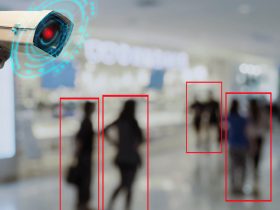Introduction
In the ever-evolving landscape of law enforcement, the ability to effectively process, analyze, and interpret vast quantities of digital multimedia evidence (DME) is paramount. This is where the DARS range of processing engines shines, offering law enforcement agencies the tools they need to navigate the complexities of modern investigations. From forensic computer technology to advanced photogrammetry, DARS empowers agencies to uncover crucial insights while ensuring forensically sound procedures and practices.
Unlocking the Power of DARS
The DARS range of processing engines is designed to enable agencies to have the right solution to playback & process, capture, or analyze the vast quantities of CCTV & Digital Multimedia Evidence (DME) while ensuring forensically sound procedures and practices. Let’s delve deeper into the key components of DARS:
Forensic Computer Technology:
DARS incorporates state-of-the-art forensics computer technology, allowing investigators to extract, analyze, and interpret digital evidence with precision. By leveraging advanced algorithms and data recovery techniques, DARS enables agencies to uncover hidden insights within complex digital datasets.
Photogrammetry:
Photogrammetry plays a crucial role in modern forensic investigations, allowing investigators to reconstruct crime scenes and analyze physical evidence in a virtual environment. DARS utilizes advanced photogrammetry techniques to create accurate 3D models from 2D images, providing investigators with valuable insights into the spatial relationships between objects and individuals.
Data Processing and Analysis:
At the core of DARS is its powerful data processing and analysis capabilities. Whether it’s processing CCTV footage, analyzing digital images, or reconstructing crime scenes, DARS streamlines the investigative process, enabling agencies to identify key evidence and build strong cases against perpetrators.

Applications in Law Enforcement
DARS finds application across various domains within law enforcement, including:
- Cybercrime Investigations: In cases involving cybercrimes, and identity theft, DARS enables investigators to analyze digital evidence from a wide range of sources, including computers, mobile devices, and online platforms.
- Counterterrorism Operations: DARS aids in counterterrorism operations by providing agencies with the tools they need to analyze digital communications, track terrorist networks, and disrupt terrorist activities.
- Crime Scene Reconstruction: DARS’s photogrammetry capabilities are invaluable for reconstructing crime scenes and analyzing physical evidence. By creating accurate 3D models, DARS helps investigators gain a deeper understanding of the events leading up to a crime and identify key points of interest.
Case Studies
Let’s explore two case studies highlighting the effectiveness of DARS in law enforcement:
- Cyber Extortion Case: In a cyber extortion case, law enforcement agencies used DARS to analyze digital communications and track down the perpetrator. By reconstructing the suspect’s online activities and tracing their digital footprint, investigators were able to identify key evidence linking them to the crime.
- Forensic Analysis of CCTV Footage: In a high-profile criminal investigation, DARS was instrumental in processing and analyzing CCTV footage from multiple sources. By using advanced algorithms to enhance video quality and extract relevant information, investigators were able to identify suspects and corroborate witness testimonies.
Conclusion
The DARS range of processing engines represents a significant advancement in forensics computer technology and photogrammetry, empowering law enforcement agencies to tackle complex investigations with confidence. By leveraging the power of DARS, agencies can unlock valuable insights from digital multimedia evidence, ultimately leading to more effective crime detection and prosecution.






